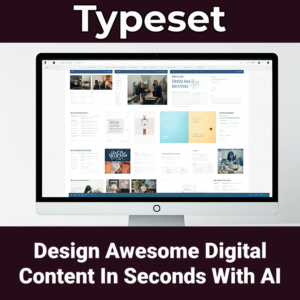In the rapidly-evolving landscape of digital marketing, two powerful forces are converging to reshape how we connect with audiences: timeless storytelling archetypes and cutting-edge artificial intelligence.
Imagine harnessing the emotional resonance of age-old narrative patterns, amplified by the creative potential of AI-driven content generation. This fusion of ancient wisdom and modern technology opens up unprecedented possibilities for marketers.
By leveraging generative AI to craft content that aligns with classic story archetypes, brands can create marketing narratives that are not only deeply engaging but also scalable and personalized at a level previously unattainable.
As marketers, we understand how, in the realm of marketing, storytelling reigns supreme. The ability to weave compelling narratives that resonate with your audience can elevate your brand from a mere product or service provider to a memorable, emotional experience.Tapping into classic story archetypes that have captivated humans for millennia, can help you create marketing campaigns that strike a chord with your target audience on a fundamental level.
In this post, we’ll explore seven timeless story archetypes and how you can leverage them to craft more engaging, impactful marketing strategies.
1. Overcoming the Monster
At its core, this archetype is about triumph over adversity. It’s the classic David vs. Goliath tale, where a hero (your customer) faces a formidable challenge (the “monster”) and emerges victorious.
How to use it in marketing:
Position your brand as the essential tool or ally that empowers your customers to conquer their biggest obstacles. This archetype works particularly well for products or services that solve specific problems.
Examples:
- A cleaning product brand showcasing how their detergent annihilates even the toughest stains, positioning the stains as the “monster” to be defeated.
- A project management software company illustrating how their platform helps teams overcome chaos and inefficiency, portraying disorganization as the “monster.”
- A fitness program demonstrating how it helps users defeat their “inner demons” of procrastination and self-doubt to achieve their health goals.
Key Takeaway: Frame your product or service as the weapon customers need to vanquish their most significant problems. This positioning not only highlights your offering’s value but also casts the customer as the hero of their own story.
2. Rags to Riches
This archetype chronicles a journey from obscurity or poverty to success and fulfillment. It’s a powerful narrative that taps into our desire for transformation and the belief that anyone can achieve greatness with the right tools and opportunities.
How to use it in marketing:
Showcase how your brand enables positive transformation and helps customers unlock their full potential. This archetype is particularly effective for aspirational products or services.
Examples:
- A skincare brand featuring before-and-after testimonials from customers who’ve achieved radiant, healthy skin.
- An online learning platform sharing success stories of students who’ve used their courses to land dream jobs or start successful businesses.
- A financial services company narrating their own brand story, from a small startup to a trusted industry leader.
Key Takeaway: Demonstrate the transformative power of your offering by highlighting real success stories and tangible results. This not only proves your product’s efficacy but also inspires potential customers to envision their own success story.
3. The Quest
The quest archetype involves a challenging journey in pursuit of a valuable prize or goal. It’s about the adventure, the obstacles overcome, and the ultimate reward at the end of the road.
How to use it in marketing:
Create a sense of adventure and achievement as customers engage with your brand. This archetype works well for brands that can gamify the customer experience or offer tiered benefits.
Examples:
- A coffee shop chain introducing a loyalty program where customers “quest” through different levels, unlocking exclusive rewards and experiences along the way.
- A tech company building anticipation for a product launch through a series of teasers and challenges, with the product as the ultimate “prize.”
- A fitness app turning the workout experience into a quest-like journey, with users “leveling up” and unlocking new features as they progress.
Key Takeaway: Transform the customer journey into an exciting adventure. By adding elements of challenge, discovery, and reward, you can increase engagement and brand loyalty.
4. Voyage and Return
Similar to the quest, this archetype focuses on a transformative journey. However, the emphasis here is on the return – how the hero comes back changed by their experiences.
How to use it in marketing:
Highlight how engaging with your brand leads to personal growth, new perspectives, or valuable insights. This archetype is ideal for experiential products or services.
Examples:
- A travel agency showcasing how their curated experiences broaden horizons and change lives, not just provide vacations.
- An MBA program featuring alumni stories that emphasize how the education journey transformed their careers and worldviews.
- A heritage brand running a campaign that takes customers on a journey through the company’s history, connecting past innovations to present-day value.
Key Takeaway: Emphasize the transformative nature of your offering. Show how customers return from their “voyage” with your brand enriched, enlightened, or empowered in some way.
5. Comedy
The comedy archetype uses humor and lighthearted storytelling to entertain and engage. It’s about creating moments of joy, surprise, and relatability.
How to use it in marketing:
Infuse your brand communications with wit and playfulness to make your brand more approachable and memorable. This archetype can work for almost any brand, but it’s especially effective for those targeting younger audiences or operating in typically “serious” industries.
Examples:
- A bank creating a series of humorous social media posts that poke fun at common financial mishaps, while subtly promoting their services as the solution.
- A software company producing a witty video ad series that exaggerates office problems their product solves, making mundane work issues laughably relatable.
- A snack food brand using playful product names and packaging designs that incorporate puns or pop culture references.
Key Takeaway: Don’t shy away from using humor to make your brand more relatable and memorable. A well-executed comedic approach can help your brand stand out in a crowded market and forge stronger emotional connections with your audience.
6. Tragedy
While less common in marketing, the tragedy archetype can be powerful when used appropriately. It often highlights problems or risks that your brand can help mitigate or solve.
How to use it in marketing:
Use this archetype carefully, focusing on how your brand prevents or resolves potentially tragic scenarios. It’s particularly suitable for brands in insurance, safety, or social cause marketing.
Examples:
- A home security company creating a PSA-style campaign that illustrates the potential consequences of inadequate home protection, followed by how their system provides peace of mind.
- An insurance provider sharing customer stories of unexpected accidents or disasters, emphasizing how their coverage helped these customers recover and rebuild.
- A nonprofit organization using stark imagery and statistics to highlight a social issue, then showing how donations can help change the narrative.
Key Takeaway: When using the tragedy archetype, always balance the sobering message with hope and solutions. The goal is to motivate action through empathy and awareness, not to exploit fears.
7. Rebirth
The rebirth archetype is all about second chances, redemption, and positive transformation. It’s a powerful narrative of hope and change that can resonate deeply with audiences.
How to use it in marketing:
Demonstrate how your brand enables positive change and fresh starts. This archetype works well for brands undergoing significant changes or those that help customers reinvent themselves.
Examples:
- A tech company undergoing a major rebranding, showcasing their journey from outdated perceptions to a cutting-edge, customer-centric brand.
- A career coaching service featuring testimonials from clients who’ve successfully pivoted to new, fulfilling careers later in life.
- An eco-friendly product line from a company previously known for wasteful practices, highlighting their commitment to sustainability and inviting customers to join their journey.
Key Takeaway: Emphasize transformation and new beginnings. Show how your brand can be the catalyst for positive change, whether it’s in your customers’ lives or in your own business practices.
Conclusion: Crafting Your Archetypal Marketing Strategy
By aligning your marketing efforts with these timeless story archetypes, you can create campaigns that resonate on a deeper, more emotional level with your audience. The key is to choose the archetype(s) that best align with your brand identity, offerings, and target audience.
Remember, effective archetypal marketing goes beyond simply fitting your message into a storytelling mold. It’s about crafting authentic narratives that genuinely reflect your brand’s values and connect with your customers’ desires, fears, and aspirations.
As you develop your marketing strategies, consider these steps:
- Identify which archetype(s) naturally align with your brand and offerings.
- Analyze your target audience to understand which archetypal narratives might resonate most strongly with them.
- Craft marketing narratives that authentically incorporate the chosen archetype(s).
- Test different archetypal approaches to see which generates the strongest response from your audience.
- Consistently apply the most effective archetypal themes across your marketing channels for a cohesive brand story.
By tapping into the power of these universal story patterns, you can elevate your marketing from mere promotion to compelling storytelling that captivates, convinces, and converts. After all, in a world crowded with marketing messages, it’s the brands that tell the best stories that ultimately win the hearts – and business – of their audiences.















